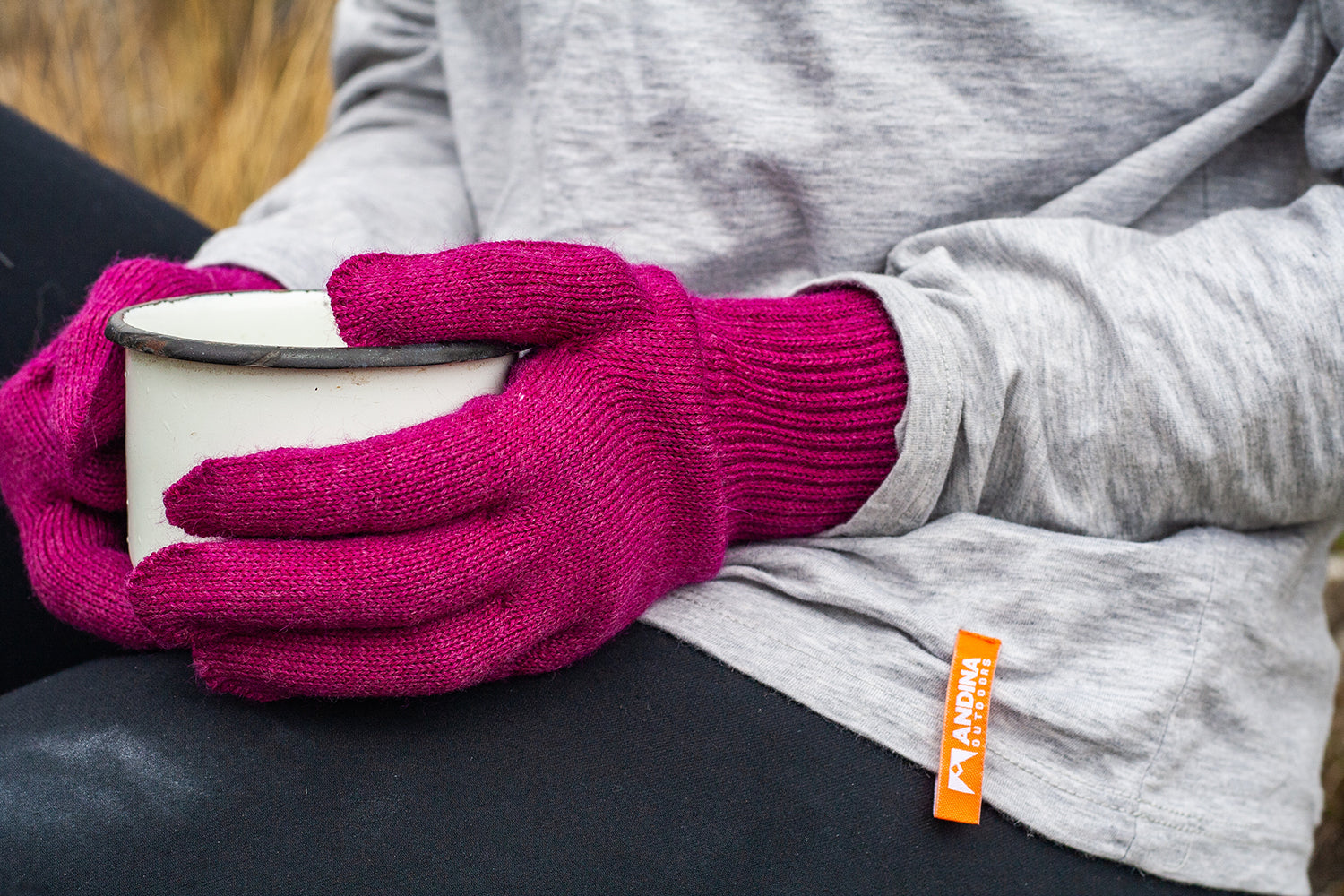When planning a hike, we often focus on boots, backpacks, or jackets. However, there's a crucial element that frequently goes unnoticed but can significantly impact your comfort: socks. Not just any pair will do. Alpaca hiking socks, with their natural properties and exceptional technical performance, have emerged as one of the best choices for long walks, cold climates, and challenging mountain trails.
This type of garment, rooted in a millennia-old textile tradition, offers not only comfort and thermal protection but also meets the modern hiker's needs: durability, moisture control, versatility, and sustainability. Let's delve into why alpaca socks are considered essential for any hiking adventure and explore the different types available based on your journey.

Why Alpaca Socks Are Ideal for Hiking
Alpaca fiber is among nature's most efficient. Its internal structure allows it to retain heat without being bulky, while its outer surface repels moisture. In cold, damp environments or areas with sudden temperature changes, this combination is key to keeping your feet dry and warm for hours.
Unlike materials like cotton—which retains sweat and cools easily—or even conventional wool, alpaca offers several specific advantages for outdoor activities.
Key Benefits of Alpaca Socks for Hiking:
- Natural thermal regulation: Keeps warmth in without overheating.
- High moisture absorption without dampness: Ensures dry feet.
- Prevents blisters and chafing: Thanks to its softness and fit.
- Reduces odors: Due to its antibacterial properties.
- Long-lasting: Maintains quality even after multiple washes or intensive use.
- Superior softness: Ideal for sensitive skin.
These benefits aren't just theoretical. More and more technical brands—including specialized Andean options like Andina Outdoors—are incorporating alpaca fiber into their hiking collections due to its real-world performance in demanding terrains and climates.
Types of Alpaca Socks and When to Use Them
Just as every trail is unique, so are socks. There are models designed to adapt to different demands based on the type of activity, climate, or hike duration. Here's an overview of the main variants and their features.
Cushioned Alpaca Socks
Designed for long routes, uneven terrains, or multi-day treks. They include extra cushioning in the sole, heel, and toe areas. These socks help reduce fatigue and minimize impact when walking over rocks, roots, or technical trails. They're favored by those undertaking high-altitude treks or multi-day routes with heavy backpacks.

Knee-High Alpaca Socks
These socks extend up to the calf or even higher. They offer greater thermal coverage and protect the skin from rubbing against high boots or dense vegetation on forested trails. Ideal for cold climates, wet areas, or for those looking to maintain warmth even during rest stops.
Crew Alpaca Socks
A versatile mid-length option. They adapt well to medium hiking boots and offer a good balance between protection and freedom of movement. Suitable for temperate climates or days with intense hiking but without extreme temperatures.

Cut Low Alpaca Socks
Although alpaca is associated with warmth, it can also function in temperate climates. Cut low models allow for breathability without excessive heat. They're useful for short hikes or summer walks where the terrain doesn't require much protection.
Alpaca Socks for Winter
Specifically designed for winter conditions. These are thicker, retain heat better, and allow for continued hiking even in sub-zero temperatures. Ideal for winter hiking, high-altitude camping, or expeditions in snowy areas.

Ski Alpaca Socks
While initially developed for snow sports, their technical construction (reinforcements, compression, support in key areas) makes them useful for extreme hiking as well. They offer stability and protection for long days in icy or windy terrains.
Performance Alpaca Socks
Designed for demanding activities, these combine alpaca with technical fibers to provide anatomical support, increased abrasion resistance, and quick moisture evacuation. An excellent choice for those combining hiking with trail running or high-impact sports.

Beyond Comfort: Softness, Hygiene, and Durability
One of the most valued aspects of this fiber is its softness. First-time users of alpaca socks often highlight the absence of itchiness and the silky feel against the skin. This is crucial during long hikes where even minimal friction can cause discomfort or injuries.
Moreover, thanks to its ability to prevent moisture and odor accumulation, many hikers use the same pair for several days without compromising hygiene or comfort. This is a notable advantage on long treks where backpack space is limited.
Even outside the mountains, alpaca socks are useful for people who spend a lot of time on their feet. In cold work environments or with limited mobility, models designed for daily use or prolonged work can be a great ally.
Some users complement their gear with alpaca thermal liners, adding an extra layer of warmth inside the footwear and improving insulation in extreme climates.
Also for Everyday Use
Beyond hiking, there are models specifically designed for daily wear. Dress alpaca socks combine elegance and functionality: they're thinner, fit well with urban footwear, and maintain warmth without causing sweat or discomfort.
Ideal for cold or temperate climates, travel where you want to carry few functional garments, or simply for those who value comfort even in their daily routine. These garments, when well-made, can last many winters without losing shape or softness.

How to Choose the Right Sock for Your Next Hike
When selecting, consider the following factors:
- Type of activity: A short walk differs from a multi-day trek.
- Destination climate: In cold areas, opt for thermal or cushioned models.
- Footwear type: Choose sock height based on the boots you'll wear.
- Fiber composition: Look for models with a high proportion of alpaca, preferably with minimal synthetic fiber blends.
- Technical design: The best models include reinforcements, flat seams, and compression panels for greater comfort.
A Technical and Sustainable Option
Choosing alpaca garments is not only a functional decision but also a conscious one. Unlike other animal fibers, alpaca farming has a low environmental impact. Alpacas don't damage pastures when feeding, require little water, and their shearing is non-invasive.
When you choose products made with this fiber—like those offered by Andina Outdoors in their specialized outdoor sports collections—you're supporting a value chain that combines sustainability, fair trade, and modern textile technology. Additionally, you're bringing a piece that connects with the Andean textile tradition on your hikes.
Conclusion
In the world of hiking, small details make a big difference. A good pair of socks can radically improve your walking experience. Alpaca socks combine softness, thermal control, breathability, and durability, making them one of the best investments for those who enjoy nature, whether on short walks, high mountain routes, or expeditions in extreme conditions.
And if you also choose a garment made with ethical standards, resistant and functional, you'll be walking with more comfort and purpose.


